After leaving Geneva we headed northwest for the 550km trek to the great city of Paris, where we stayed for three days at the Hotel Pullman Paris Tour Eiffel close to the base of the iconic tower which will be the focus of the next post.
Paris is the largest city in France with a population of more than two million and a metropolitan area of over twelve million people. It is located on the River Seine where it was first settled over two thousand years ago.
The Avenue des Champs Elysées is probably the most famous street in Paris, stretching almost two kilometres between the Arc de Triomphe to the west and Obelisk de Luxor to the east. It is home to some of the most expensive real estate, high end fashion boutiques and jewelry stores in the world.
Place Charles de Gaulle is a large area that serves as the origin of twelve straight roads including the Champs Elysées that spread out like giant spokes in a wheel. In the centre of the place is the Arc de Triomphe. This makes the Arc de Triomphe the centre of one of the busiest and scariest roundabouts in the world. It is said that there are eleven lanes of traffic circling around the Arc with absolutely no lane markings on the cobblestones that make up the roadway. It was fascinating to observe and I’m very happy we left our rental car at the hotel and walked.
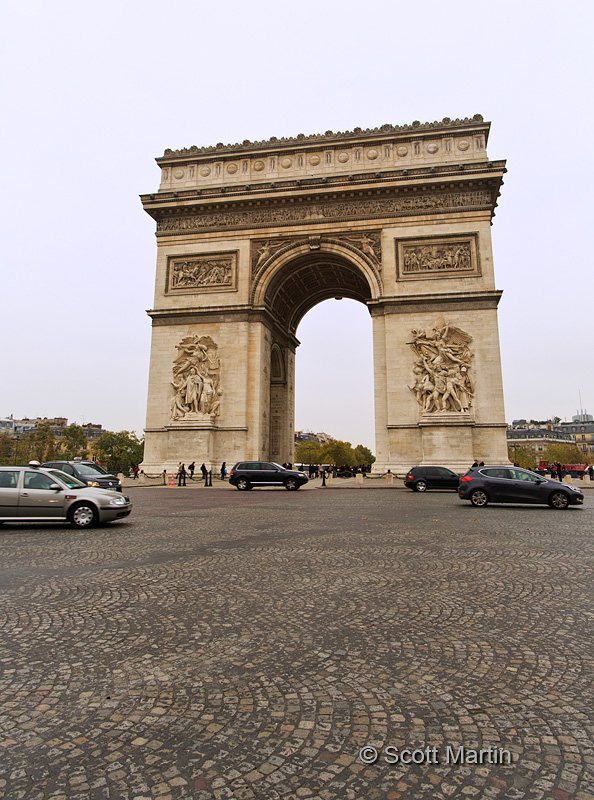
The Arc was commissioned in 1806 but not completed until about thirty years later. It was patterned after the Arch of Titus in Rome and was built to remember the French soldiers who fought & died in the French Revolutionary and Napoleonic wars. Below the arc is the Tomb of the Unknown Soldier remembering those who perished in the First Great War.
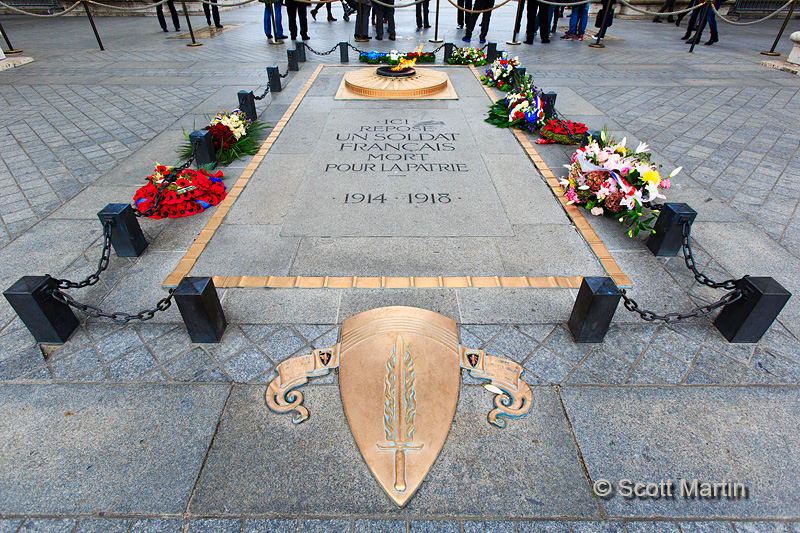
The names of those remembered are carved on the walls of the Arc, while the arches are intricate marble tiles which makes for an interesting wide angle shot looking up from the centre of the Arc.
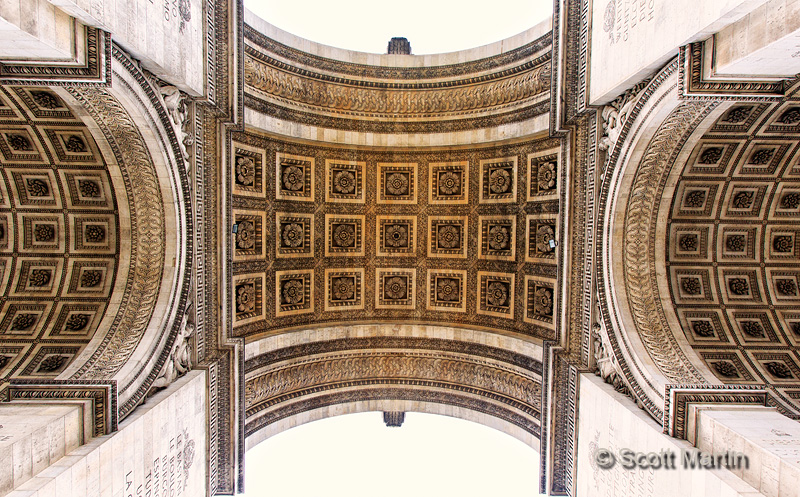
The Arc de Triomphe was fun to photograph at night as the hundreds of cars that are racing around its base provide some interesting lighting effects.
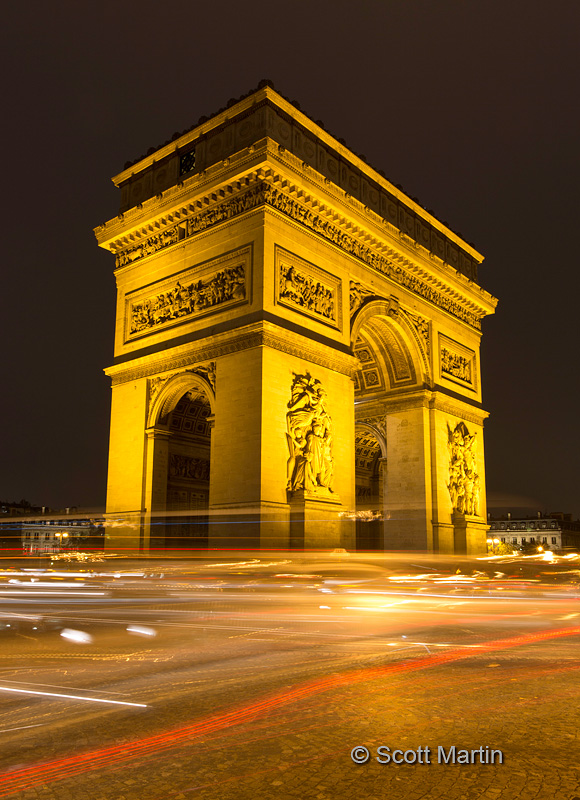
I didn’t notice the dog in the back of the car while taking this next shot, however it has become one of my favourite elements of the image.
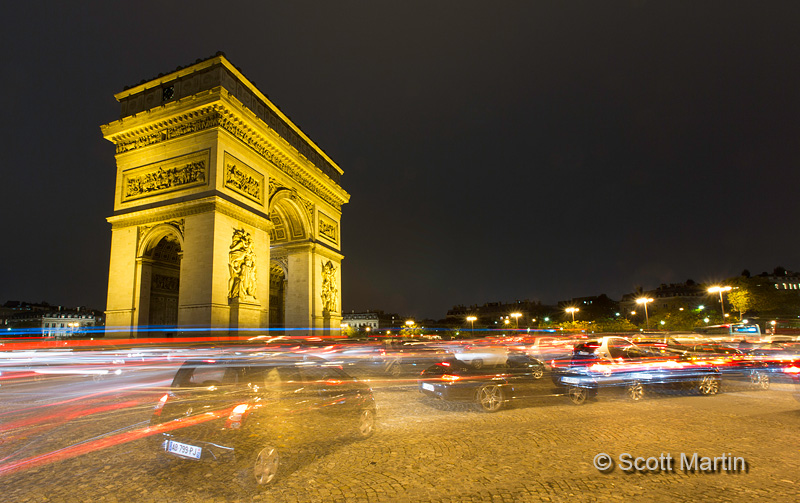
These last two images of the Arc are more classic views, however also required placing oneself into the middle of the traffic to get the desired composition. The first image was taken with a 70-200mm lens from the middle of the Champs Elysées about three blocks from the Arc in order to frame the Arc with the trees and streetlights. It was taken at f/22 to create the starburst effect on the streetlights.
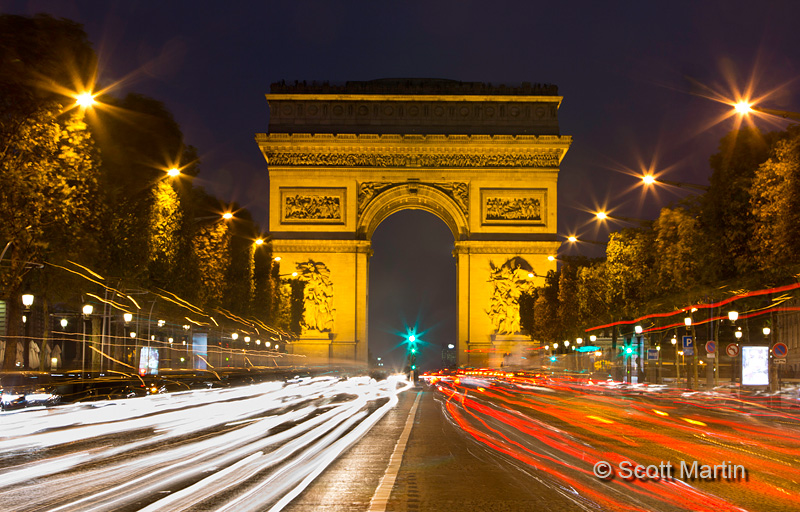
The last shot is similar to the one above however taken on a different street from a vantage point much closer to the Arc using a 16-35mm lens to provide a feel for the curved motion of the vehicles entering and exiting the roundabout.
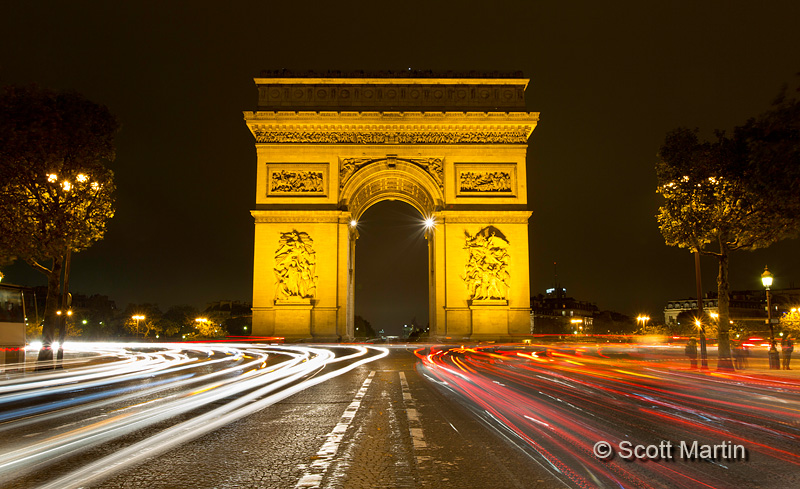
We walked the three miles between the Arc and the Louvre down the Champs Elysées and the following are a few snapshots along the way.
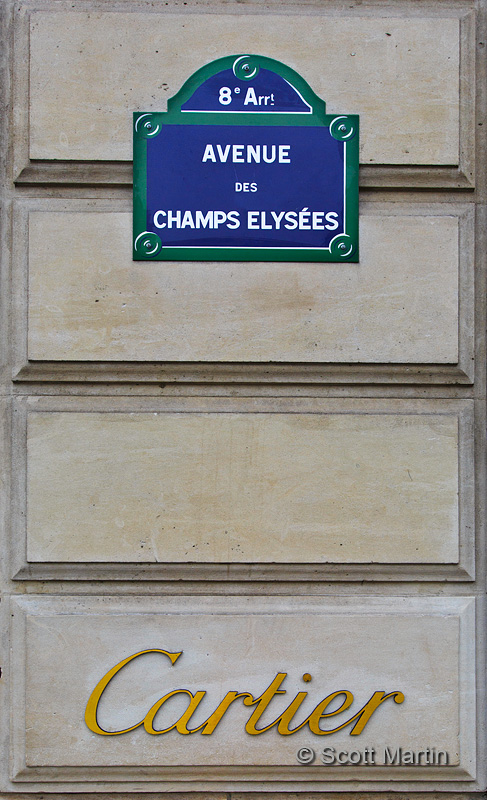
We didn’t buy any jewelry at Cartier, however we did stop at my new favourite shop, LaDuree, the worlds best (and probably most expensive) bakery.
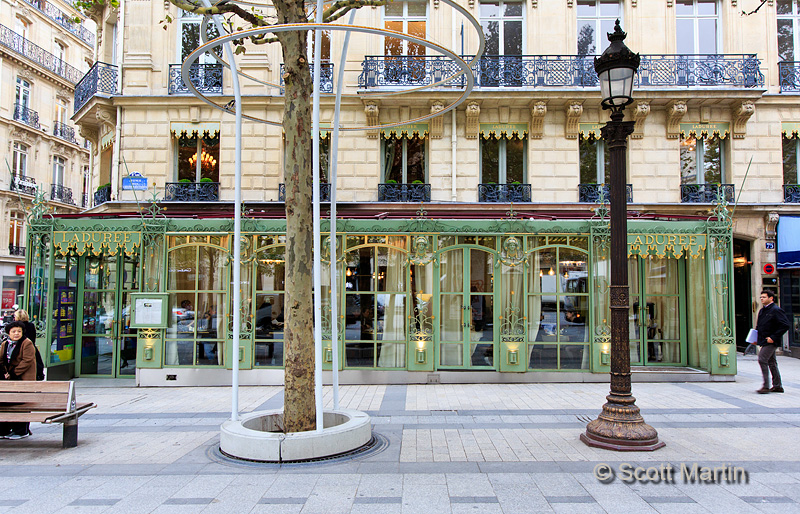
Absolutely spectacular!
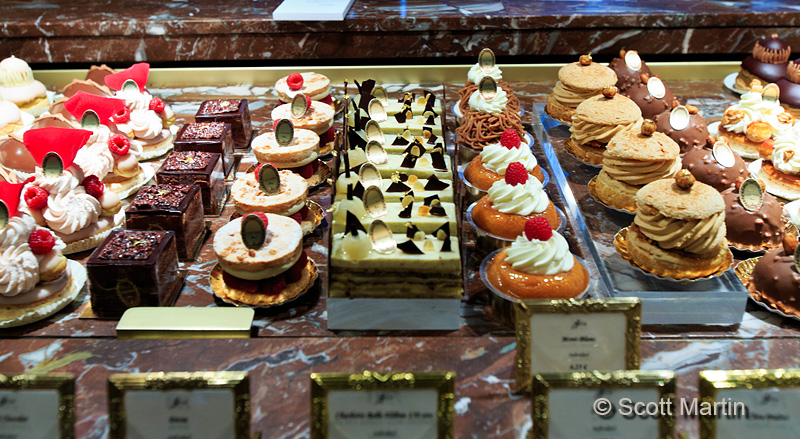
When you think of Louis Vuitton in Canada, you picture a small high end boutique…..in Paris its a department store!
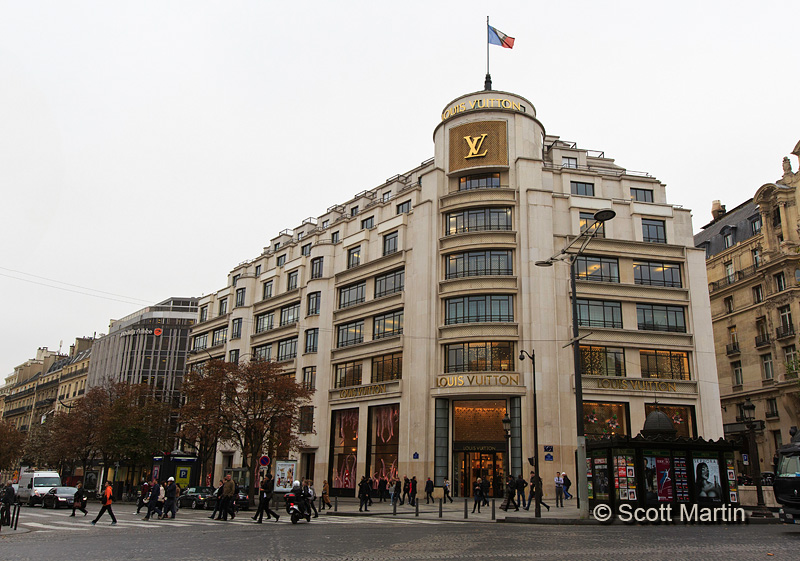
The Champs Elysées ends at the Obelisk of Luxor which stands in the middle of the Place de la Concorde. It first stood in front of the Luxor Temple in Egypt over 3,300 years ago. The 75′ high yellow granite obelisk arrived in Paris on December 21, 1833, exactly 180 years ago today!
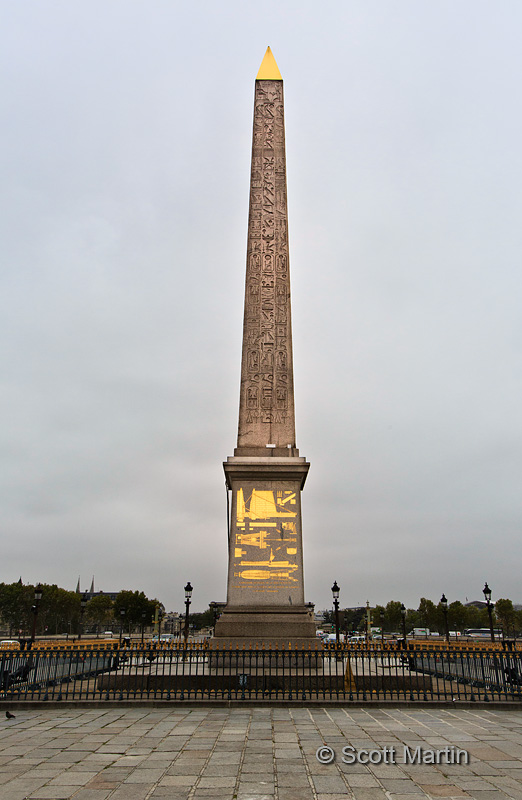
Beyond the obelisk to the east are a number of parks and museums stretching out about a kilometer before arriving at the Louvre.
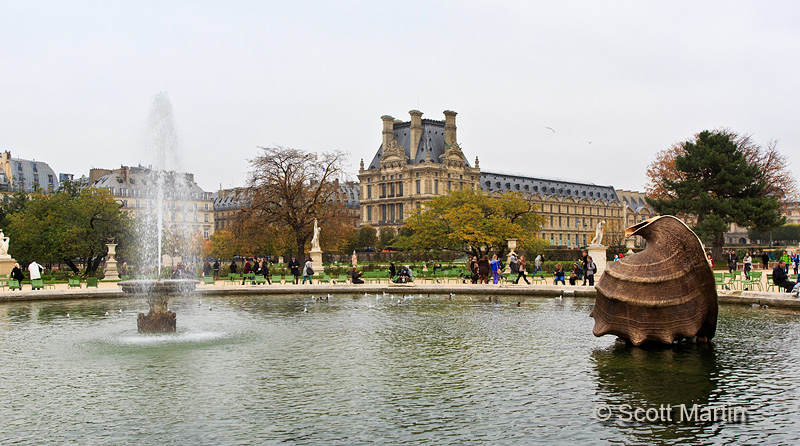
The last park you pass through on the way to the Louvre is Place du Carrousel in the centre of which is the Arc de Triomphe du Carrousel which stands in perfect alignment with the Obelisk Luxor, the Champs Elysées and the Arc de Triomphe in Place du Gaulle almost three miles away. The Carrousel Arc is older and about half the size of the Arc de Triomphe.
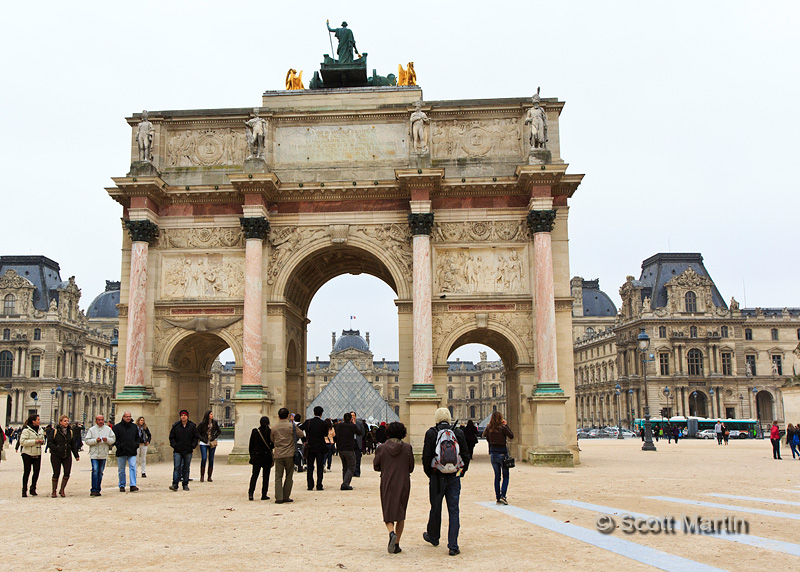
…..and the typical tourist shot 🙂
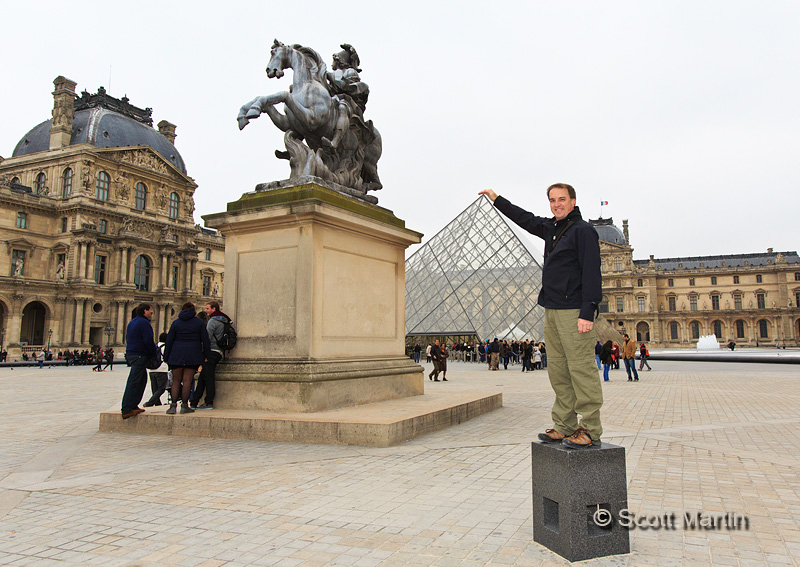
One of the things that surprised me about the Louvre was its sheer size as well as how the modern glass pyramids rise out of the central square yet don’t seem to detract from the old architecture of the museum buildings themselves.
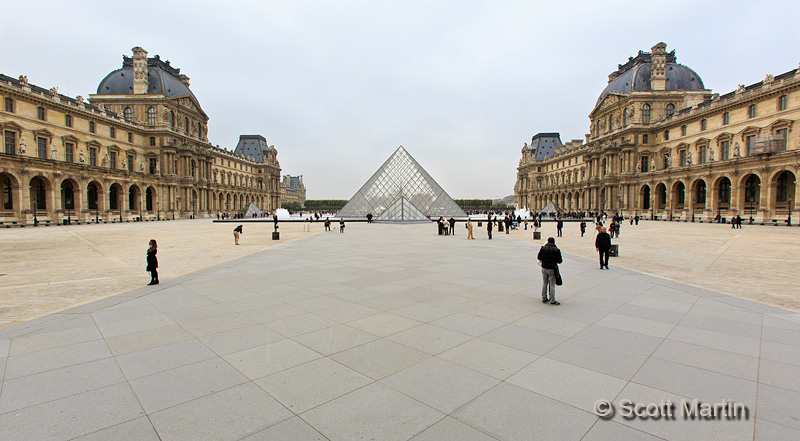
.
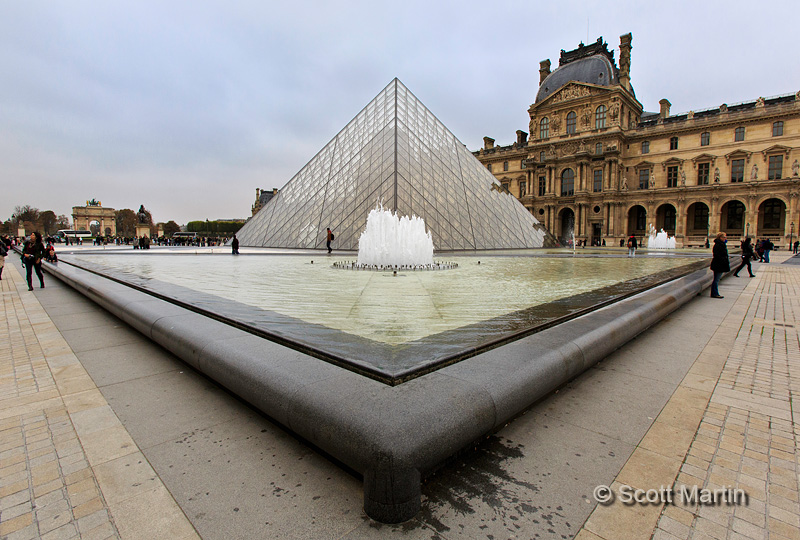
.
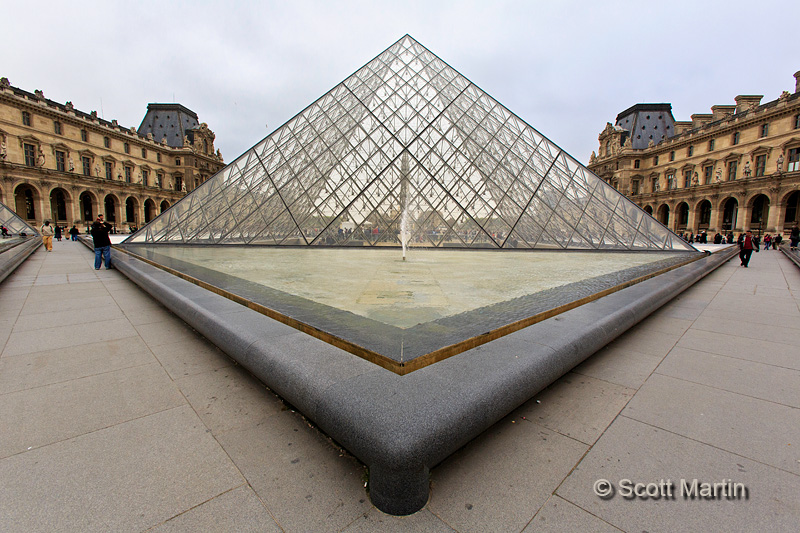
.
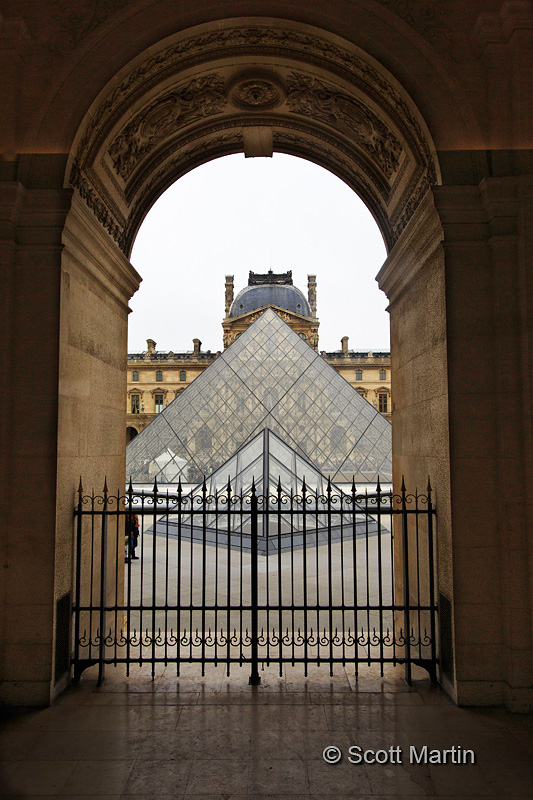
.
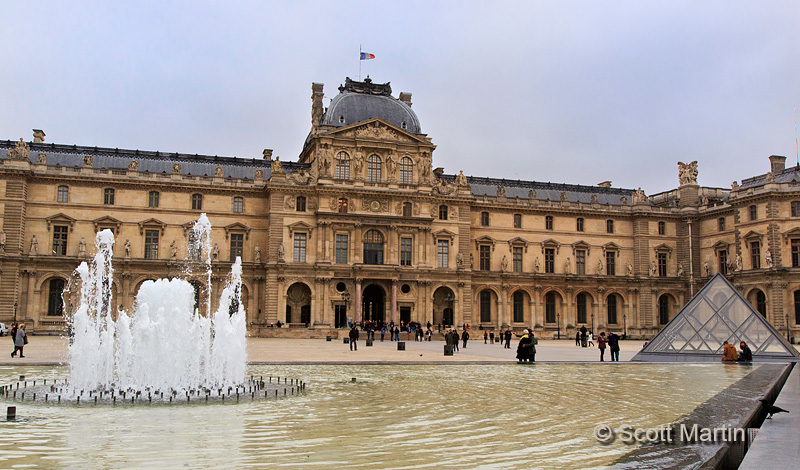
Using my iPhone, I recorded a 360° panorama using an app called Photosynth. Click here to check it out. (Note: The pano works fine on Chrome and Firefox however I did have problems viewing it on Safari)
The main entrance to the Louvre is through the central pyramid and down into a cavernous subterranean lobby accessed by a large circular stairway.
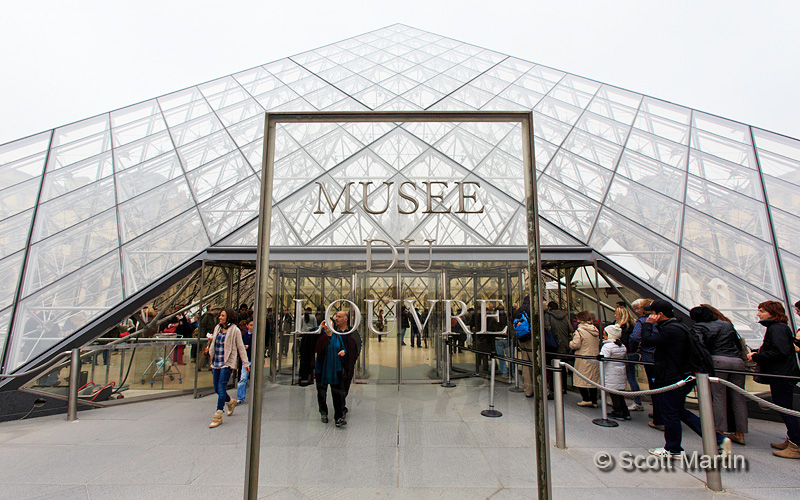
.
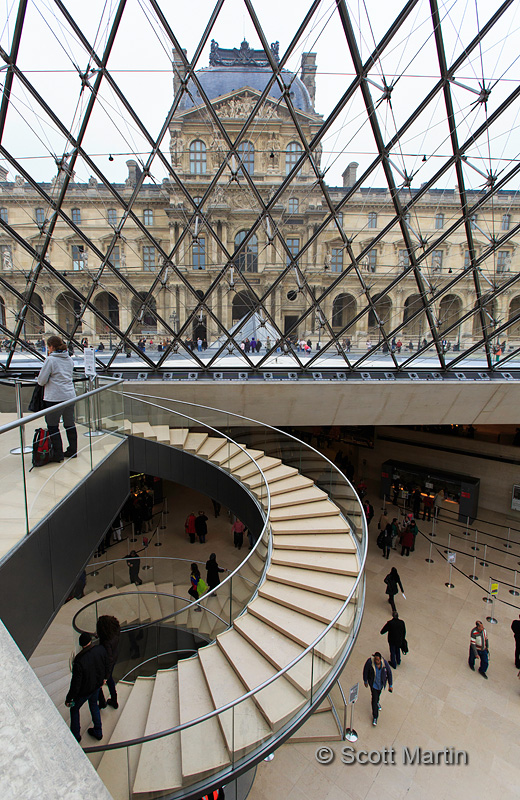
The next image is interesting for the photography enthusiast. It is an in-camera ±3 stop HDR that is processed in the 5D MkIII and saved as a single image. You can customize the exposure settings as well as how the images are processed. Once set up, the camera takes three different exposures of the same scene and then merges them into one image which it saves before deleting the three original images. HDR is an acronym for High Dynamic Range , which refers to scenes where the light intensity within the frame exceeds the ability of the camera to correctly expose the image with one shot. In the image below I metered on the central yellow pillar and set the camera to take one shot at that exposure plus one three stops over-exposed (to properly record the dark areas in the lobby) and one three stops under-exposed (to properly record the bright sky). Putting those three shots together resulted in the shot below. The amazing thing was that all of this happened with one trip of the shutter. Photographers have been doing HDR shots for years, however they always took lots of time ‘developing’ them on the computer afterwards.
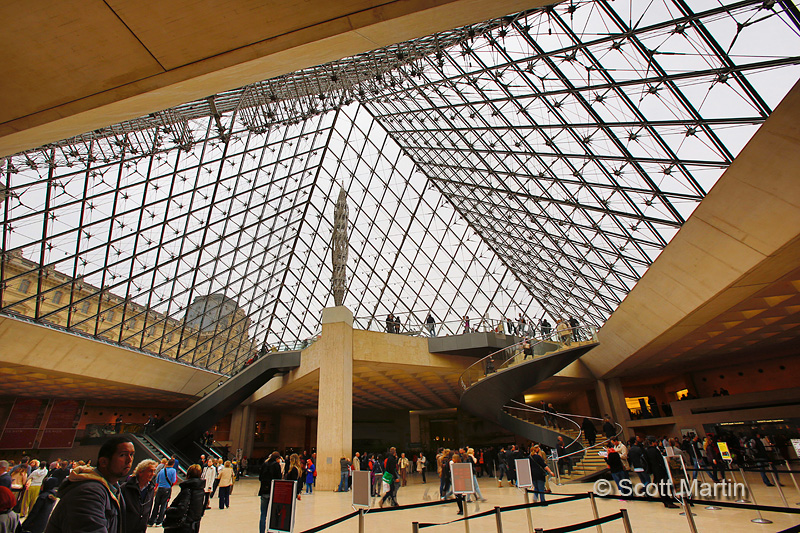
Wandering through the seemingly endless maze of hallways and galleries within the Louvre was fascinating for Deb & me, even though neither one of us grew up with an appreciation for the arts. I could include many images however will pare them down to arguably the two most famous pieces found within the walls of the Louvre. The Mona Lisa and Venus de Milo.
The Mona Lisa was painted on a white poplar panel around 1506 by the Italian painter Leonardo da Vinci. Although not small, the 30×21″ painting is not as large as one expects when viewing it for the first time.
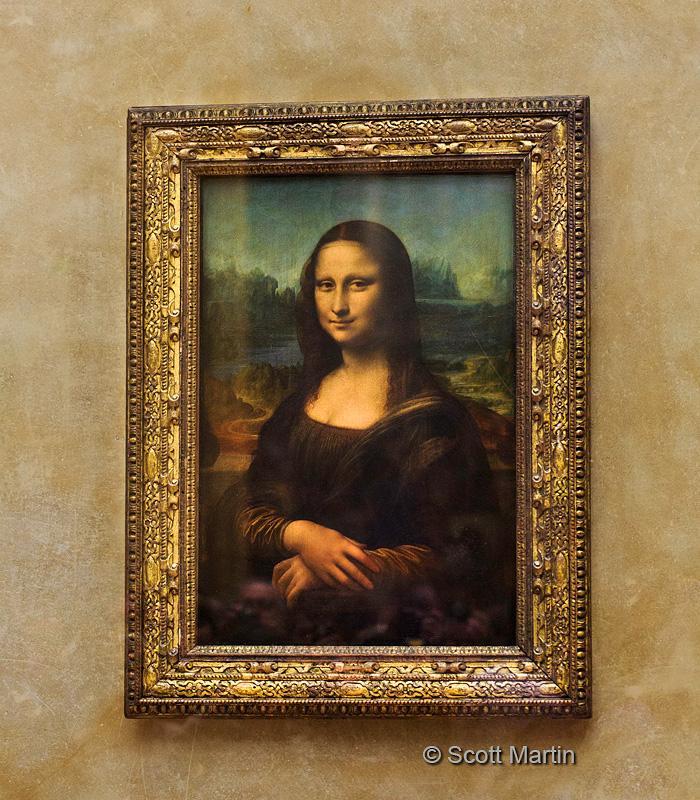
Venus de Milo, or more correctly Aphrodite of Milos, is a 6’8″ white marble statue carved sometime between 130-100 BC by Alexandros of Antioch. Its larger than life size and folk-lore suggest that it depicts Aphrodite, the Greek goddess of love & beauty, known to the Romans as Venus.
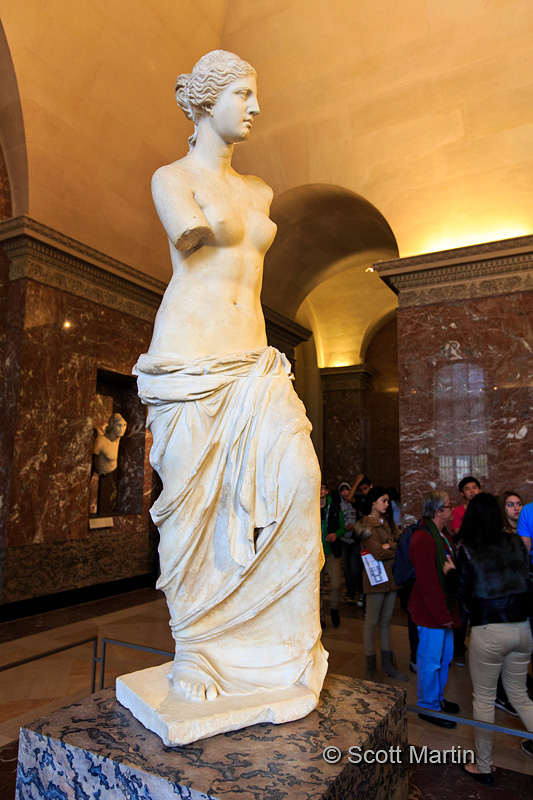
After finishing our tour of the Louvre we crossed over to the left bank of the River Seine and headed towards Notre Dame and the Eiffel Tower which will be the subject of the next blog post.
A very Merry Christmas to all who stop by the blog and I look forward to keeping in touch with you in 2014.

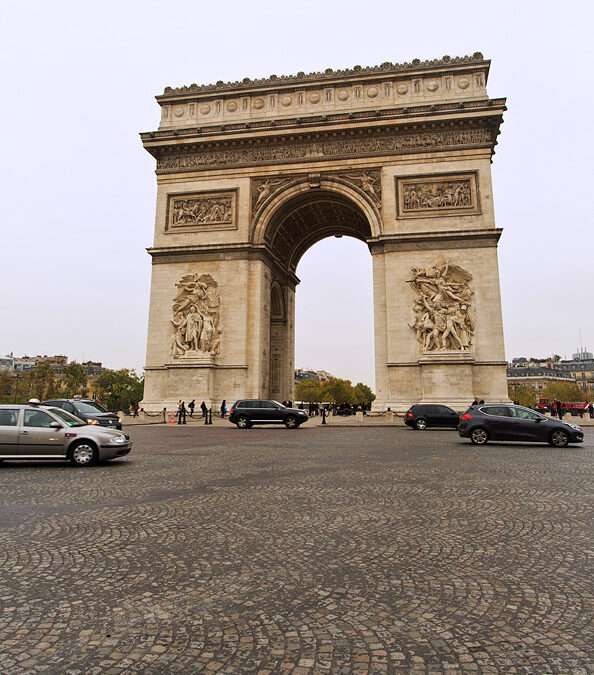
Scott, these pictures are fantastic!! Also, I found the blog very informative. I wish I had known all these details before visiting there. It would have made my visit far more meaningful.
Thank Dad……I was thinking that you would be impressed that the obelisk arrived in Paris on the same day I was writing this post!
What a terrific post Scott! You certainly have a penchant for architectural photography and turned what would be just regular tourist shots into works of art worthy of hanging in a gallery. I’m trying to picture how you took the photos of the Arc de Triomphe from the Champs-Élysées, it almost appears as though you were risking life and limb for the shot. I hope you were standing somewhere safe!
Thanks Arni and for the middle of the street shots I was relying on the strength of that Gitzo tripod to protect me. Deb was on the side walk praying and the nice policeman was waving and speaking in a language I didn’t understand 🙂